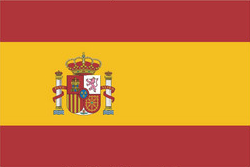Russia is planning to spend $694 million on its Glonass system in 2012. The Kommersant daily has quoted government sources as saying that the project may cost the country 346.5 billion rubles (almost $12 bln) in 2012-2020.
 Russia plans to begin testing its second Glonass-K navigation satellite in 2013, Grigory Stupak, the deputy head of the Russian Space Systems company producing navigation and other equipment for the satellite, said on Tuesday. It was earlier reported that the satellite would be first tested by the end of 2012. The first Glonass-K satellite was successfully tested in February 2011.
Russia plans to begin testing its second Glonass-K navigation satellite in 2013, Grigory Stupak, the deputy head of the Russian Space Systems company producing navigation and other equipment for the satellite, said on Tuesday. It was earlier reported that the satellite would be first tested by the end of 2012. The first Glonass-K satellite was successfully tested in February 2011.
Glonass is Russia’s answer to the U.S. Global Positioning System, or GPS, and is designed for both military and civilian uses. Both systems allow users to determine their positions to within a few meters.
Russia currently has a total of 31 Glonass satellites in orbit, with 24 operating to provide global coverage, four in reserve, two under maintenance and one undergoing trials. According to Roscosmos, two Glonass satellites are under maintenance, one is on standby, and one recently launched satellite is being integrated into the grouping. The complete Glonass grouping needs 24 functioning and 2-3 reserve satellites to operate with global coverage.
Russia is planning to spend $694 million on its Glonass system in 2012. The Kommersant daily has quoted government sources as saying that the project may cost the country 346.5 billion rubles (almost $12 bln) in 2012-2020.
In 2020, Russia plans to have 30 satellites in orbit, including six in reserve. To support the orbital grouping, Russia plans to launch 13 Glonass-M satellites in 2012-2020 and 22 new-generation Glonass-Ks to replace the outdated ones. Russia will build eight Proton-M and 11 Soyuz-2.1b carrier rockets for this purpose.








